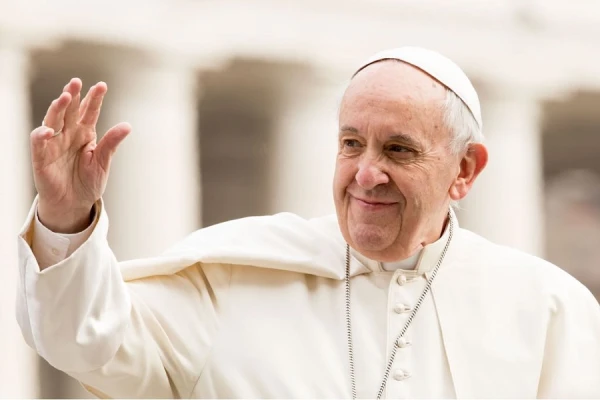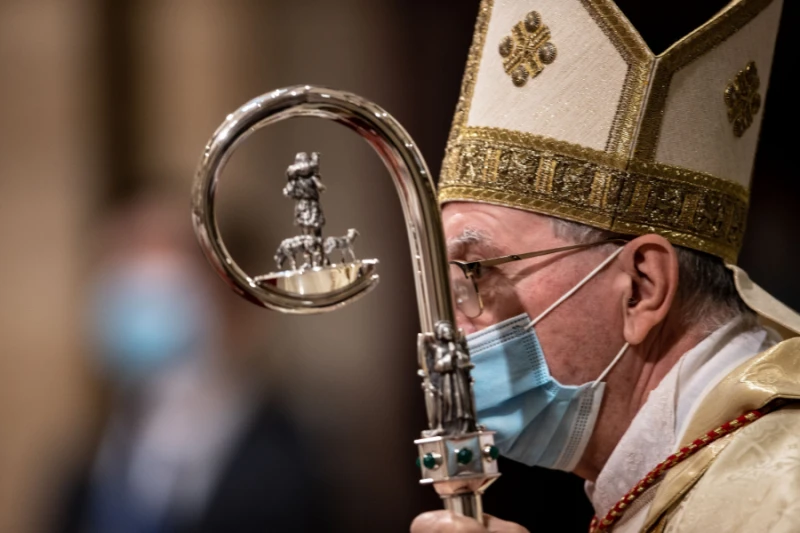
Vatican City, Mar 30, 2021 / 08:00 am (CNA).- Pope Francis has highlighted the plight of people forced from their homes due to the climate crisis, calling on Catholics to respond with selflessness and charity.
In the preface to the document “Pastoral Orientations on Climate Displaced People,” published March 30, Pope Francis said, “When we look, what do we see?”
“Many are being devoured in conditions that make it impossible to survive. Forced to abandon fields and shorelines, homes and villages, people flee in haste carrying just a few souvenirs and treasures, scraps of their culture and heritage,” he said.
“They set out in hope, meaning to restart their lives in a place of safety,” he added. “But where they mostly end up are dangerously overcrowded slums or makeshift settlements, waiting on fate.”
The pope said that when people are driven from their homes because they have become uninhabitable, “it might look like a process of nature, something inevitable.”
“Yet, the deteriorating climate is very often the result of poor choices and destructive activity, of selfishness and neglect, that set humankind at odds with creation, our common home,” he underlined.
“Pastoral Orientations on Climate Displaced People” was published by the Vatican’s Migrants and Refugees section, which is led by Canadian Cardinal Michael Czerny, S.J.
According to Fr. Fabio Baggio, C.S., under-secretary of the department, the guidelines are intended to help bishops’ conferences, dioceses, religious congregations, Catholic organizations, pastors, and all Catholics “in pastoral planning and development programs for the assistance of climate displaced persons.”
“The climate crisis has a ‘human face,’” Baggio said at a March 30 press conference. “It is already a reality for millions of people throughout the world, in particular for the inhabitants of the existential peripheries. The Catholic Church has a motherly concern for all those who have been displaced by the effects of this crisis.”
In the preface, Pope Francis said that the document “calls on us to broaden the way we look at this drama of our time. It urges us to see the tragedy of prolonged uprootedness that causes our brothers and sisters to cry out, year after year, ‘We can’t go back, and we can’t begin anew.’”
The document “invites us to become aware of the indifference of societies and governments to this tragedy,” he added. “It asks us to see, and to care. It invites the Church and others to act together, and spells out how we might do so.”
At the press conference, Fr. Joshtrom Isaac Kureethadam outlined the drastic climate change caused by the rise in greenhouse gas emissions in the last several decades.
“We need to acknowledge that there exists a strong nexus between climate crisis and displacement,” he said, emphasizing that “the climate crisis is becoming one of the primary triggers of displacement in recent years.”
People can be forced to leave their homes due to “rapid-onset triggers, mainly extreme weather phenomena like floods, storms, droughts, and wildfires,” he said, or by “slow-onset processes like water scarcity and depletion of other natural resources, desertification, rising temperatures, and sea-level rise.”
Kureethadam said that in 2019, out of more than 33 million newly displaced people, 8.5 million were displaced because of violence and conflict, while 24.9 million people were displaced due to natural disasters.
“It is ultimately a moral problem,” he commented. “The poor and vulnerable communities whose carbon emissions are only a fraction of those of the rich world are already the early and disproportionate victims of the crisis.”
He noted that the designation of “climate-caused displacement,” or CCD, does not yet exist, and that “the poorest don’t even manage to cross” borders into new countries, but are mostly displaced within their own country, “because they don’t have any resources, any help to go anywhere.”
Pope Francis said that helping people in this situation “is the work the Lord asks now of us, and there is great joy in it. We are not going to get out of crises like climate or COVID-19 by hunkering down in individualism but only by ‘being many together,’ by encounter and dialogue and cooperation.”
“To see or not to see is the question that leads us to the answer in action together. These pages show us what is needed and, with God’s help, what to do.”
If you value the news and views Catholic World Report provides, please consider donating to support our efforts. Your contribution will help us continue to make CWR available to all readers worldwide for free, without a subscription. Thank you for your generosity!
Click here for more information on donating to CWR. Click here to sign up for our newsletter.




These comments by the pope on global warming are both silly and sad.
First of all, if the warmist theory is true, what does it mean? Temperatures go up two degrees in the next hundred years?
Which means that, in a hundred years, the temperature of New York City, say, rises to what the temperature is in Wilmington, Del., today. And Wilmington’s temperature in 100 years will be what Ocean City’s is today. And so on down the East Coast.
Now, I don’t see the citizens of Ocean City or Wilmington fleeing their uninhabitable hellholes today.
Even the citizens way down in New Orleans seem somehow to be surviving their cosmopolitan inferno.
It’s also worth noting that the warmists’ doomsday scenarios are based on the same types of computer models that predicted the U.S. would suffer more than two million deaths from the COVID-19 virus outbreak by the end of 2020.
The actual total number of deaths was less than 340,000. Which means the computers were wrong by a factor of nearly six.
If today’s warming computers are similarly (in)accurate, we should look forward to worldwide temperatures rising precisely one-third of one degree over the next century.
Which would mean that in a hundred years the temperature in New York City will be about as warm as South Amboy, N.J., which is within sight of Staten Island, is today.
In other words, the change would be absolutely undetectable to any but the most sensitive thermometers.
Finally, why are all of the “climate scientists” who are predicting climate doom meteorologists? Why are there no heliologists — scientists who study the sun — onboard the warmist doomsday train?
Perhaps it’s because heliologists know that the energy output of the sun is unpredictable from decade to decade, and even from year to year. And the sun is the source of the vast majority of the earth’s heat.
Less energy from the sun means a cooler earth, not a warmer one.
In recent decades, in fact, the energy output of the sun has lessened. Which means the real danger might not be global warming at all, but cooling, which would represent a far greater threat to life on earth than warming.
The truth is, on a warmer earth with more abundant supplies of carbon, more of the earth’s surface becomes suitable for raising crops, and plants grow more easily.
I have no idea how versant Bergoglio is regarding climate science. I believe he worked as a chemist in a laboratory as a young man.
But his summary pronouncements on climate never seem to offer any clues about what data points or even what assumptions they are based on.
It’s discouraging to see a pope using — or, more likely, abusing — his position to weigh in on matters he is obviously not qualified to discuss.
One cannot help but wonder whether the credibility of the papacy will be affected.
The vaccine multi-side syndicate is an enterprise in blood. The Holy Father can not become contracted in it, no matter what the cause.